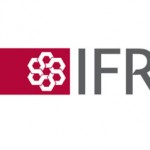Why Companies Suffer Large, Unexpected Credit Losses

For companies that sell business-to-business products and services, many things can contribute to a company incurring a loss from a bad debt. The most important factor is probably the quality of the organization’s finance and credit management process. But even the best-managed corporate finance and credit departments experience large, unexpected and painful credit losses. The effect of such a loss on the company’s stakeholders can be devastating. Lenders, vendors, customers and even employees can also be affected, especially when a large, key customer defaults on its obligations.
Why do these credit losses continue to happen?
1) Individuals can’t time the markets perfectly. Have you ever heard the saying in stock-market circles that trying to time the market is a sucker’s bet? What holds true in the stock market also holds true in other capital markets, including those for bonds and credit. Very few individuals, even among the most talented institutional money managers, are capable of entering the market at exactly the right time.
In a sense, the same principle applies to corporate credit management. Even the most talented credit executives will struggle to time the decision of purchasing credit protection on a high-risk customer. Most corporate credit managers can only take a 6- to 12-month future view on a given customer’s credit quality, since most non-finance or nonbank corporate credit is based on sales terms of 30, 60 or 90 days. Very typically, by the point in time when a credit executive believes that the probability of a key customer’s default within the next six to 12 months is high, it’s often too late to buy credit protection on that customer, because the coverage is either too expensive or unavailable. That is akin to trying to buy fire insurance on a burning building.
Markets and capital move too fast to accurately time when a customer is going to default. While the market can often provide clues to sophisticated finance and credit executives that credit risk is increasing, timing the default of specific customers is virtually impossible.
2) Bankruptcy filing is viewed as a legitimate operating strategy. During the post-World War II era through the late 1980s, managers who were associated with a company that filed for protection under Chapter 11 of the U.S. Bankruptcy Code were considered incompetent. In the United States today, senior executives face little of that stigma.
Moreover, large bankruptcies like Olympia & York, Atlantic Gulf, Ames Department Stores, Continental Airlines and America West spawned an entire cottage industry of distressed debt investors, forensic accountants, bankruptcy attorneys and specialty trading desks on Wall Street. Though Congress did pass legislation in the late 1990s and early 2000s to streamline the bankruptcy process to address issues such as which claims would be allowed and how long the process of reorganization should take, the corporate bankruptcy developed into a big business.
As a result, the business culture in the United States has evolved (or devolved) to the point where a company might seek relief from its creditors not because the company is having cash-flow problems or is in technical default to its lenders, but because its operating strategies have failed. Large, medium and small companies can file for bankruptcy protection because they face underfunded pension liabilities, environmental litigation, labor-union conflict or have obsolete technology, to name a few examples.
This operating environment — in which a company may file for bankruptcy even if its it not technically insolvent on a balance-sheet basis — makes it much more difficult to manage credit risk at an enterprise level. Risk management is fundamentally about mitigating the risk of factors within and beyond one’s control. However, when the number of external factors beyond the company’s control increase exponentially because of the country’s business culture, credit management becomes much more challenging.
3) The global economy is interconnected like never before. Given the close linkage between corporate credit quality and credit availability, and, in turn, credit availability and economic cycles, credit professionals need to start thinking like global investors. There are a multitude of variables now beyond the control of credit departments. Here are some of the most troubling challenges, related to the global economy:
- The world economy is more interconnected. Billions of dollars can be moved in a millisecond at a mouse click with the potential to trigger great volatility in the capital markets.
- Expansionist monetary and fiscal policies of G-7 governments will continue to distort global capital markets and public finance for the next generation.
- The explosion of public- and private-sector debt in this artificially low interest rate environment bodes the possibility of grave credit problems come this decade’s end, especially when interest rates begin to rise again. And rise again, they will.
- Excluding China, the world’s industrialized economies will, at their most aggressive, limp along at the “new normal” of 1.5 to 2.5 percent real GDP growth for the next two to three years. This will fail to generate the nonfarm, private sector job growth needed to fuel significant growth in capital investment and consumer spending.
What does all of this mean for a company? Which economic indicators matter the most to the credit quality of your customer base? Some economic indicators are applicable to just about all companies, like the amount of debt it takes to fund the operations of the U.S. government.
Massive amounts of public-sector borrowing have the potential to crowd out private-sector borrowing, especially in the event of a financial crisis in a much higher interest-rate environment. In addition, consider how much corporate debt has been issued in the private sector during this time frame. What will be the impact on global credit markets when interest rates rise in the next few years and all of this public and private-sector debt needs to be refinanced at a higher rate? In such a scenario, will the Chinese and Japanese central banks still have an appetite to lend to the U.S. government? Mismanaged monetary and fiscal policies promise a painful reckoning day in the private sector later this decade, especially from a credit-risk perspective.
4) Companies fail to insure or they self-insure credit risk. No executive in the industrialized world would ever contemplate operating his or her business without insuring the company’s fixed assets against fire or its directors and officers against lawsuits. This is because those types of coverage are considered routine and universally assumed to be a cost of doing business. However, many companies often leave the largest asset on their balance sheet, their accounts receivable, uninsured.
Some financial and credit executives self-insure their customers’ credit risk. They justify it by taking comfort in adequate bad debt reserves. However, under generally accepted accounting principles (GAAP), bad-debt reserve allocations are only a noncash accounting entry and they are not tax deductible. Moreover, a bad debt reserve provides no relief to cash flow when the customer default occurs.
Following is a case study of a credit insurance program which was implemented for an unregulated natural gas marketing subsidiary of a U.S.-based, Fortune 1,000 utility. This utility was looking for a way to more efficiently leverage and augment its existing bad-debt reserve:
- The subsidiary’s bad debt reserve as of December 31, 2012, was about $7.8 million.
- Based upon the loss experience, this was arguably a highly over-reserved position.
- The bad debt reserve afforded no leverage and no tax benefit.
- The credit insurance program was structured to target the client’s customers who were rated at or just below minimum investment grade (S&P rated BBB and B+).
- That customer segment was targeted due to its high potential for a materially negative impact on the client’s balance sheet, income statement and cash flow.
- The company’s annualized premium was in the range of $500,000 to $600,000.
- The credit insurance policy leveraged premium dollars significantly (i.e., at least 40:1 based on the policy’s underwritten limits) relative to bad debt reserve (1:1).
- The policy allowed the client to exchange a non-tax-deductible reserve allocation for bad debt for a fully tax-deductible premium funded fully by the existing over-reserved allowance.
The bottom line: Companies might want to try something other than a bad-debt reserve. There are a multitude of credit-risk mitigation strategies, such as credit insurance, political risk insurance and accounts-receivable put options, that serve as viable alternatives.
(By Marc D. Wagman: the managing partner of Aequus Trade Credit, a specialty broker of credit protection products ranging from traditional credit insurance to political risk insurance and credit derivatives. Prior to joining Aequus in 2003, Wagman was vice president-sales for Euler Hermes ACI, where he concentrated primarily on export-oriented companies. In the early 1990s, he sourced trade claims and sold receivable puts for Avenue Capital, a hedge fund. He began his career as a treasury and financial analyst for The CIT Group).
Source: CFO





























